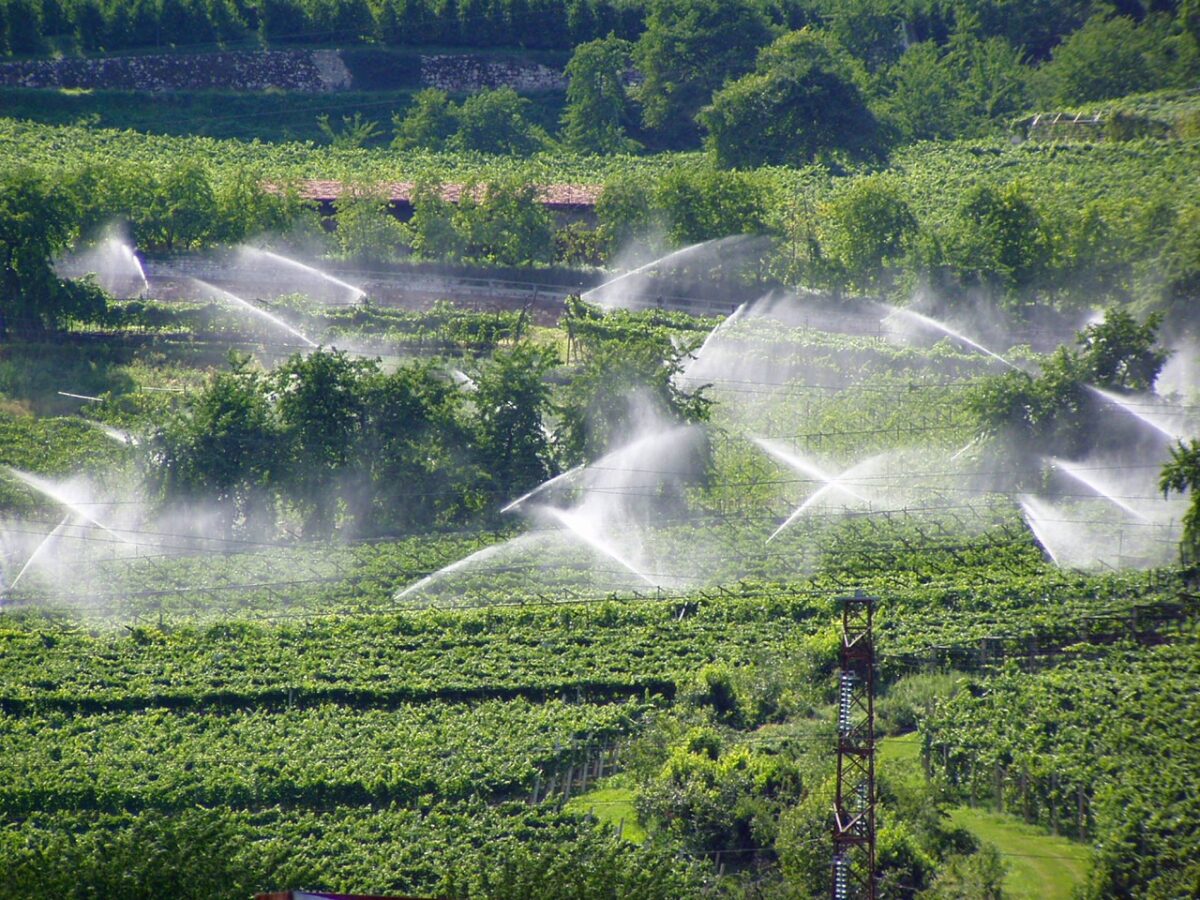Researchers from China's Northwest A&F University have proposed to combine photovoltaics with compressed air energy storage (CAES) to power sprinkler irrigation systems.
They explained that sprinklers usually work at higher working pressure and more energy consumption than drip irrigation and subsurface irrigation systems, and that photovoltaics alone may have some limitations in solving issues derived from its intermittent energy supply. “The spraying quality cannot be guaranteed,” they added. “Therefore, energy storage devices are often needed for a stable energy supply.”
The CAES-PV irrigation system designed by the group consists of a water source, a 150 W water pump, a 240 W PV array consisting of two 120 W panels, a pressure tank made of carbon steel, a time-delay switch, and a sprinkler. The PV panels power the pump to draw water from the water source and inject it into the closed pressure tank.
“With the increased water in the tank, the air in the tank is gradually compressed,” it stressed. “When the internal energy of the air in the tank reaches the critical value, the valve of the tank opens and the internal energy of the air is converted into kinetic energy of the spray water, supporting the spraying lasts for a few seconds.”
The system performs this process in cycles triggering pulse spraying.
Through a series of tests, the academics found that the proposed CAES-PV sprinkler is able to provide stable standardized intermittent pulse spraying. “Reasonable selection of energy storage regulation factor and nozzle combination spacing can achieve a spraying uniformity coefficient of 91.5 %,” they specified, noting that the system can also provide high pressure and low intensity high-quality spraying.
The novel system design is presented in the paper “Solar photovoltaic coupled with compressed air energy storage: A novel method for energy saving and high quality sprinkler irrigation,” published in Agricultural Water Management.
“Due to the limited research in this respect, further research should be carried out in terms of the energy conversion efficiency of CAES-SPV sprinkling irrigation system, as well as soil water infiltration, soil microenvironment changes and their effects on crop yield and quality under low-intensity and long-term intermittent spraying,” the research group said, looking forward to improving the technology.
This content is protected by copyright and may not be reused. If you want to cooperate with us and would like to reuse some of our content, please contact: editors@pv-magazine.com.




By submitting this form you agree to pv magazine using your data for the purposes of publishing your comment.
Your personal data will only be disclosed or otherwise transmitted to third parties for the purposes of spam filtering or if this is necessary for technical maintenance of the website. Any other transfer to third parties will not take place unless this is justified on the basis of applicable data protection regulations or if pv magazine is legally obliged to do so.
You may revoke this consent at any time with effect for the future, in which case your personal data will be deleted immediately. Otherwise, your data will be deleted if pv magazine has processed your request or the purpose of data storage is fulfilled.
Further information on data privacy can be found in our Data Protection Policy.